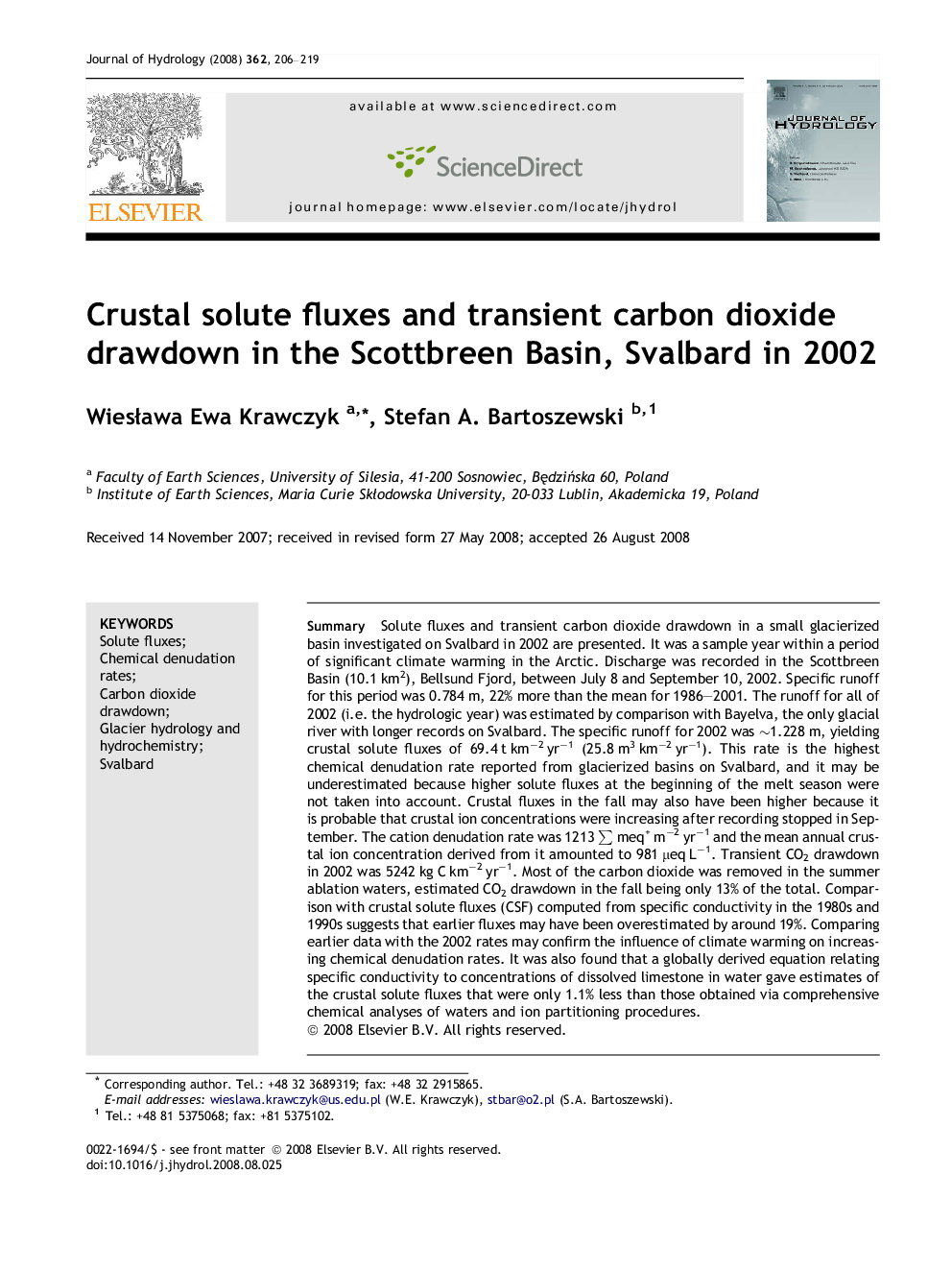| کد مقاله | کد نشریه | سال انتشار | مقاله انگلیسی | نسخه تمام متن |
|---|---|---|---|---|
| 4579159 | 1630094 | 2008 | 14 صفحه PDF | دانلود رایگان |

SummarySolute fluxes and transient carbon dioxide drawdown in a small glacierized basin investigated on Svalbard in 2002 are presented. It was a sample year within a period of significant climate warming in the Arctic. Discharge was recorded in the Scottbreen Basin (10.1 km2), Bellsund Fjord, between July 8 and September 10, 2002. Specific runoff for this period was 0.784 m, 22% more than the mean for 1986–2001. The runoff for all of 2002 (i.e. the hydrologic year) was estimated by comparison with Bayelva, the only glacial river with longer records on Svalbard. The specific runoff for 2002 was ∼1.228 m, yielding crustal solute fluxes of 69.4 t km−2 yr−1 (25.8 m3 km−2 yr−1). This rate is the highest chemical denudation rate reported from glacierized basins on Svalbard, and it may be underestimated because higher solute fluxes at the beginning of the melt season were not taken into account. Crustal fluxes in the fall may also have been higher because it is probable that crustal ion concentrations were increasing after recording stopped in September. The cation denudation rate was 1213 ∑ meq+ m−2 yr−1 and the mean annual crustal ion concentration derived from it amounted to 981 μeq L−1. Transient CO2 drawdown in 2002 was 5242 kg C km−2 yr−1. Most of the carbon dioxide was removed in the summer ablation waters, estimated CO2 drawdown in the fall being only 13% of the total. Comparison with crustal solute fluxes (CSF) computed from specific conductivity in the 1980s and 1990s suggests that earlier fluxes may have been overestimated by around 19%. Comparing earlier data with the 2002 rates may confirm the influence of climate warming on increasing chemical denudation rates. It was also found that a globally derived equation relating specific conductivity to concentrations of dissolved limestone in water gave estimates of the crustal solute fluxes that were only 1.1% less than those obtained via comprehensive chemical analyses of waters and ion partitioning procedures.
Journal: Journal of Hydrology - Volume 362, Issues 3–4, 5 December 2008, Pages 206–219